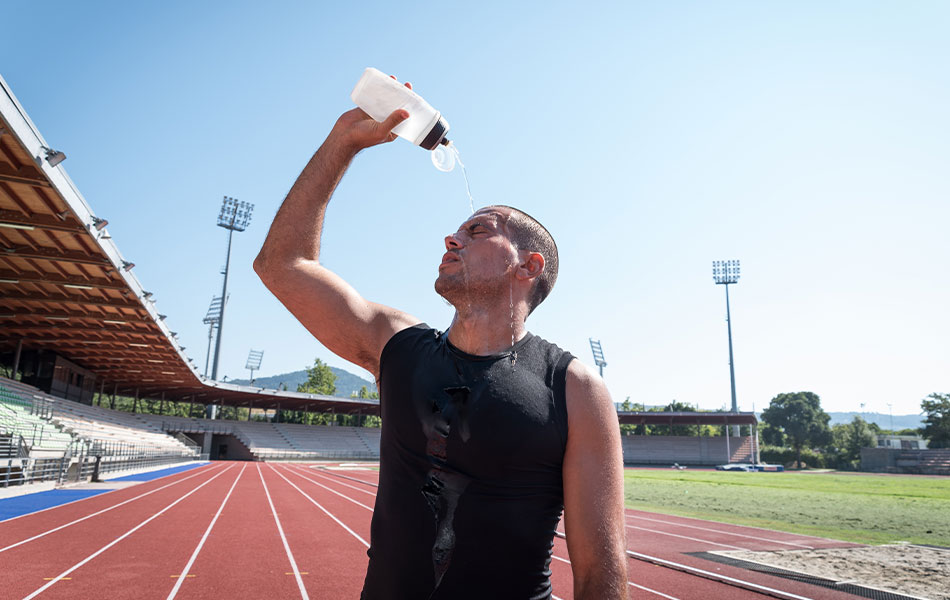How to Prepare and Dress for Hot-weather Training

Hey Angels and Alphas,
Hot-weather walking or running, whether you do it for weight loss or not, can feel absolutely terrible… and pretty much impossible to dress for. All the sweat, the sunburn, the chafing, all of that doesn’t make up for the fact that our bodies are great at thermoregulation (for the most part.)
Researchers have long known that the more aerobically fit you are, the better your body is at handing hot temperatures. But what about those first few days or weeks when the hot weather is just setting in, or those days on which exercising feels like you’re in a sauna?
That’s when your wardrobe and ability to prepare will play a major role in how comfortable and efficient you’ll actually be during exercise.
Today, we’re here to talk about a few tips from the experts on how you can strategically pick out your clothes and accessories so you can stay safe and comfortable while you’re training during the hottest months of the year.
Let’s get started.
First, you must learn to understand “real feel” temperatures.
Contrary to popular belief, not all heat is created equal. Levels of humidity can make the effects of heat better or worse by dampening the rate at which sweat evaporates from your body.
Sweat isn’t just an annoyance that happens when you’re getting too hot. It’s the body’s mechanism for cooling itself down, and this effect can only happen as sweat begins to evaporate. When the humidity is high, sweat tends to stick around.
Not only that, but the more you have to work to cool your body off, the hotter you’re going to feel. If you’re riding a bike, you won’t feel nearly as hot as you will when you’re running. This is because of the air flow helping sweat evaporate off your body.
To get you started on preparing and dressing for the hot weather, here are a few major pointers you can use for your prep:
#1 SHADE YOUR FACE
The sooner you invest in some breathable, sweatproof caps, the better. Aim for one that provides UV protection, keeps the sun off your face and scalp, and helps you keep the sweat out of your eyes.
You may prefer to wear a headband or buff so you can keep your hair off your face, or you might choose to wear no cap at all if you have short hair. But if you do that, just realize that you’ll be getting a lot of sun exposure on your scalp.
#2 TOPPING IT OFF
If the weather is hot, make sure any skin exposed to the sun has sunscreen covering it. Perhaps the easiest way to avoid sunburn is to simply cover up as much of your skin as possible while you still allow your skin to breathe so it can cool itself down.
Countless athletic brands are making clothes that are ultra-lightweight that also provide UV protection while consuming moisture and keeping you chill. There really isn’t a fabric that works as well for wicking sweat as much as just having bare skin. But covering your skin for protection from the sun’s radiation is absolutely vital, especially if you’re training.
Using clothing is one of the best ways to protect your skin from the sun. But make sure what you’re wearing is actually bringing you UV protection.
Plain white T-shirts are only rated at around SPF 7, which is minimal. Some athletic clothing provides up to SPF 50, and if you’re going out for a long run or walk, you might want to bring those along. This will save you from the need to reapply sunscreen every couple of hours.
#3 CHECK YOUR FABRICS
When it comes to clothing, opt for light and minimal. Put on a lot of sunscreen, and then let the air hit your skin as much as possible so you can speed up your natural cooling process. When it comes to your choice of fabrics, the lighter the better! While loose fits might feel great initially, most people prefer tighter fits, and when fabrics start to soak, they sort of wear you down. If you’re not working extra hard, wear loose clothing that provides you with enough air flow. If you’re going to be training hard, once the loose clothing gets wet, it’s much more prone to chafing.
Shorts and tank tops that usually feel fantastic in 60-degree weather won’t do much for you in the 90-degree heat. Look for fabrics that boast moisture-wicking properties. And don’t forget to skip that cotton T-shirt (which will just end up soaked up and suffocating you in a matter of a few minutes.)





